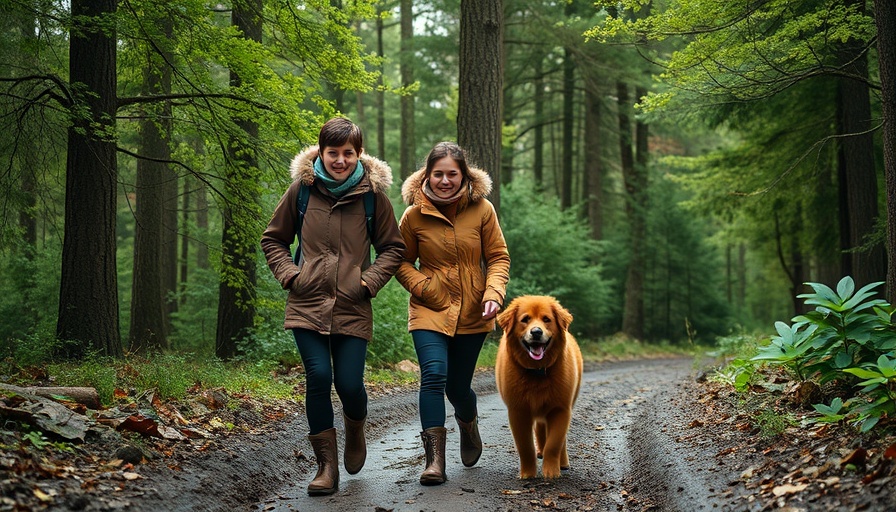
Unlocking the Joys of Daily Walks: Why It Matters
Walking your dog is not merely an obligation; it’s a delightful ritual that nourishes both you and your furry companion. As natural explorers, dogs require exercise for their physical and mental wellness. Engaging in this daily routine profoundly benefits both dog and owner, creating shared experiences that enhance your relationship and promote overall well-being.
Physical Benefits for Your Four-Legged Friend
Regular walks offer a multitude of health advantages for dogs. First and foremost, they assist in weight management by burning off that extra kibble, which in turn helps prevent obesity-related issues. An astonishing study found that dogs who walk regularly have improved cardiovascular health, with strengthened hearts and lungs.
Beyond heart health, exercise is crucial for joint mobility. Walking increases the lubrication in joints, reducing the risk of arthritis and other health problems as dogs age. Additionally, it has been shown that well-exercised dogs enjoy a longer lifespan—sometimes even a few years more. Lastly, walks stimulate the digestive system, ensuring your pet stays regular.
The Mental Boost of Daily Walks
Daily walks can greatly improve your dog's mental health. As they encounter new environments, smells, and other creatures, they receive essential mental stimulation that prevents boredom and associated behavioral issues. Moreover, these excursions offer chances for socialization, allowing dogs to interact with other pets and humans.
According to HelpGuide, walking boosts dogs’ mood and reduces anxiety, as the physical activity releases endorphins into their systems. A well-exercised dog is less likely to engage in destructive behaviors, making walks essential for both your peace of mind and your pet's happiness.
Why Walking Also Benefits You
The benefits of dog walking extend far beyond your pet. For owners, daily strolls can significantly elevate mood and mental health by reducing stress. Research indicates that exposure to pets can lower the levels of cortisol, a major stress hormone, enhancing overall emotional health.
In fact, participating in physical activities like walking can lead to increased cardiovascular health for the human companion. Regular exercise fosters better sleep patterns and promotes a higher quality of life. By establishing a walking schedule, you can also create social bonds with fellow dog owners, enriching your sense of community.
Optimal Walking Duration and Tips for Enjoyment
The duration of your daily walks should align with your dog's breed, age, and energy level. Smaller pooches may require around 30 minutes, while larger breeds might need 60 minutes to thrive. These guidelines, however, are flexible. The important thing is consistency.
To maximize the walking experience, here are some tips: use a proper leash and harness for safety, stay hydrated, choose safe routes, and reward good behavior. It’s also beneficial to mix up the routine—exploring different parks or trails can keep both you and your dog engaged.
Engaging the Paws and Heart: The Emotional Tie
Walking together not only serves as physical exercise but also strengthens the emotional bond between you and your furry friend. Depending on your dog’s age or personality, these walks can become core moments for interaction, training, and shared enjoyment.
As you embark on your walking adventures, pay attention to your dog's responses. Every wag of the tail signifies joy and comfort, reinforcing the importance of these moments together. Creating shared memories fosters a unique bond that can yield a lifetime of companionship.
Looking Ahead: A Healthy Future Together
As you lace up your shoes and grab your dog's leash, remember that these daily walks pave the way for a healthier future—for both of you. In the hustle and bustle of modern life, it can be easy to overlook this simple yet impactful activity. But the benefits of integrating regular walks into your routine are profound and far-reaching.
Not only does walking sustain your dog’s health and happiness, but it also enriches your life, creating opportunities for joy, connection, and wellness. So, step outside, breathe in the fresh air, and celebrate the beauty of daily walks—you both deserve it.
Join the Movement!
In the spirit of making daily walks a cornerstone of pet ownership, why not challenge yourself? Aim to walk your dog at least twice a day and document the improvements you notice in both your lives. Sharing your journey with the community can inspire others to embark on this rewarding adventure. Remember, the road to a healthier, happier life begins with a single step—so why wait? Grab that leash and start today!
 Add Row
Add Row  Add
Add 


Write A Comment